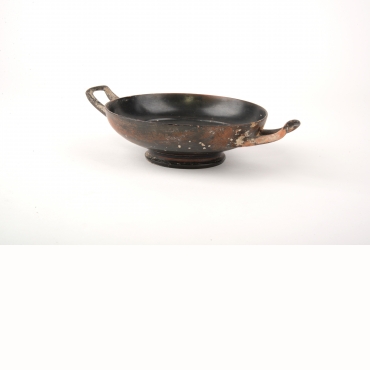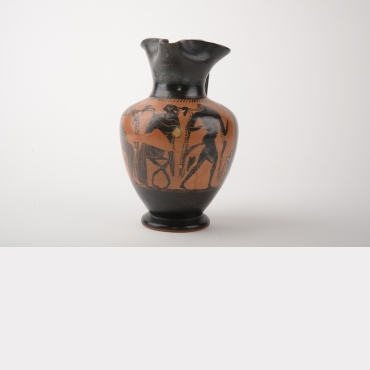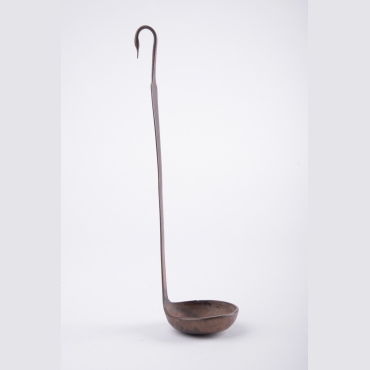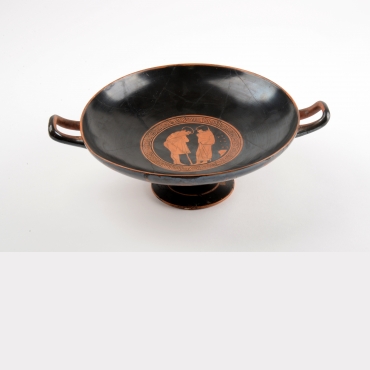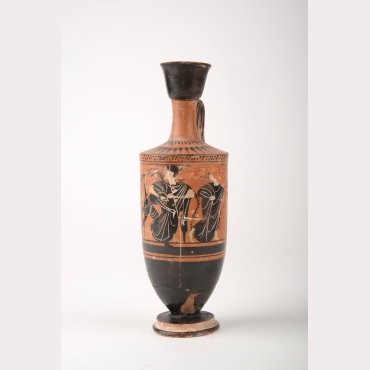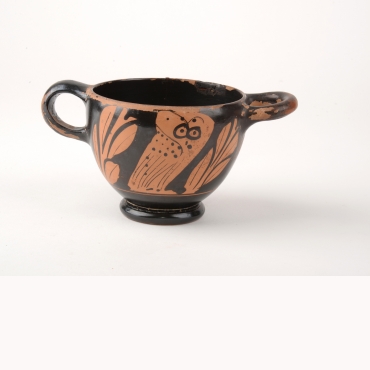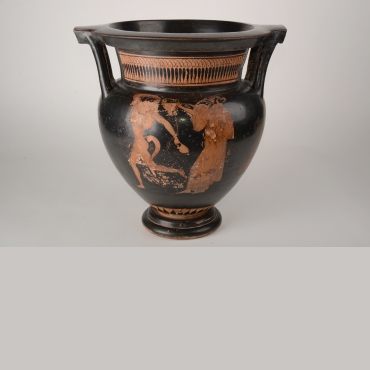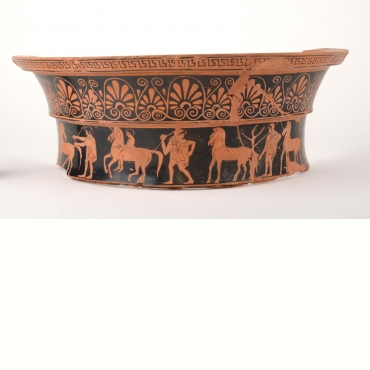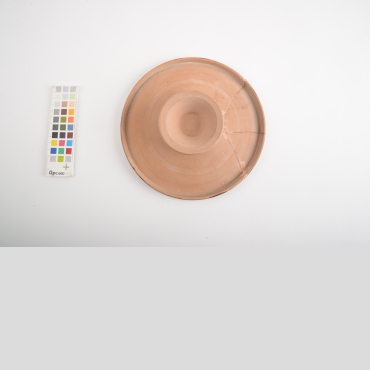CLAS108 Classical Art and Archaeology: Of Heroes, Gods and Men
This small set of pottery was chosen as a schematic representation of some of the vessels that would have been used in a typical Athenian symposium. The symposium was an aristocratic drinking party traditionally attended by (male) citizens, and served as a setting in which to reinforce group solidarity and to enhance the social standing of the host or some other designated individual.
This activity took place in a purpose-built room within the upper class Greek house, the andron, which might be decorated with mosaic floors and, in the Roman context, elaborate wall paintings. Wine was brought into the room in an amphora, mixed with water in the krater, and then served to each participant from an oinochoe (wine pitcher, as opposed to a hydria, or water pitcher). Participants reclined on low benches (klinai) and drank from fine stemmed cups (kylikes), as opposed to the relatively plain skyphos cups used in more informal settings.
This style of gathering proved to be extremely popular with the contemporary Etruscans (in Italy) and later with the Romans. As a result, a huge proportion of Athenian red- and black-figure pottery designed for sympotic activity was imported to Etruscan and south Italian sites, where it was deposited in aristocratic tombs.
The images painted onto these vessels often have clear aristocratic overtones (kylix, E39-107), a direct relationship to the actual symposium (krater, E50-198), and/or mythological significance (oinochoe, E28-86). Thus, even through something as simple as domestic pottery, Athenian aristocratic ideals and culture were spread across the Archaic, Classical, and Hellenistic Mediterranean world.

